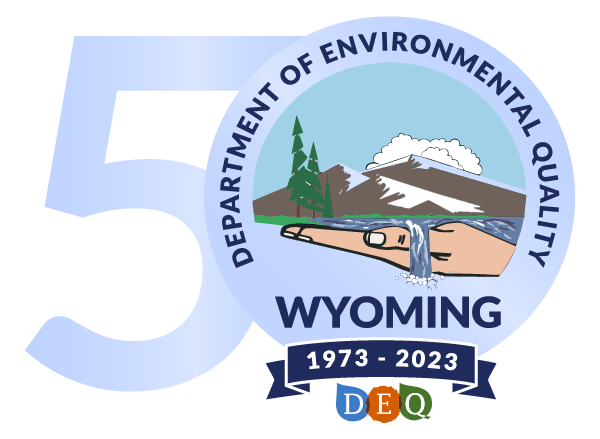CHEYENNE, Wyo – With summer upon us and more people heading to Wyoming’s lakes and reservoirs to recreate, the Wyoming Department of Environmental Quality (DEQ), Wyoming Department of Health (WDH), Wyoming Livestock Board (WLB), Wyoming Department of Agriculture, Wyoming Game and Fish Department, Wyoming State Parks, Wyoming Association of Conservation Districts, and United States Forest Service want to remind the public to avoid and keep animals away from harmful cyanobacterial blooms (HCBs) and to report suspected blooms and bloom-related illnesses to DEQ and WDH at WyoHCBs.org.
Cyanobacteria, also known as blue-green algae, can form HCBs that produce toxins and other irritants that pose a risk to human and animal health. HCBs typically occur when water temperatures increase in still or slow-moving water, or when wind aggregates cyanobacteria near shorelines. HCBs may be green, brown, or blue-green in color and may appear as discolored water, small grass clippings, scum, floating mats, or spilled paint. HCBs can occur on or in the water, either floating or attached to plants, rocks, or other material. When HCBs form, they may last days, weeks, or even months.
Once reported, WDH may follow up on potential HCB-related illnesses and DEQ will investigate potential blooms to determine if they are harmful. As outlined in Wyoming’s HCB Action Plan, WDH will issue advisories for waterbodies where cyanobacteria or toxins may pose a risk to people that come into contact with the water. A Bloom Advisory is issued for a waterbody when a cyanobacteria bloom is present. A Toxin Advisory is issued for a waterbody when toxin concentrations exceed recreational thresholds. A map of advisories and answers to frequently asked questions (FAQs) can be found at WyoHCBs.org.
If a bloom is present, the WDH and WLB recommend the following:
- Avoid contact with water in the vicinity of the bloom, especially in areas where cyanobacteria are dense and form scum.
- Do not ingest water from the bloom. Boiling, filtration, or other treatments will not remove toxins.
- Rinse fish with clean water and eat only the fillet portion.
- Avoid water spray from the bloom.
- Do not allow pets or livestock to drink water near the bloom, eat bloom material, or lick fur after contact.
- If people, pets, or livestock come into contact with a bloom, rinse off with clean water as soon as possible.
Seek medical attention or a veterinarian if a person or animal is experiencing adverse health effects after exposure to a cyanobacterial bloom. Young children, pregnant women, people with weak immune systems, and animals are especially at risk. Information on general health risks and symptoms related to a cyanobacterial bloom can be found on WDH’s webpage:
For more information, visit Wyoming’s HCB webpage at WyoHCBs.org.
###
